Most of the time I receive samples by courier 3 or 4 days after the company sends it, but sometimes I’m being sent devices over airmail which may take 2 to 3 weeks, or even more. Today, I received such a parcel with no clear description on the package, and a relatively heavy blank carton box.

But I remembered somebody told me they’d send a large power bank for laptops. Could it be it? Sure enough. The power bank is called MAXOAK K2, and claims to offer a 50,000 mAh capacity using a Polymer Li-on battery.
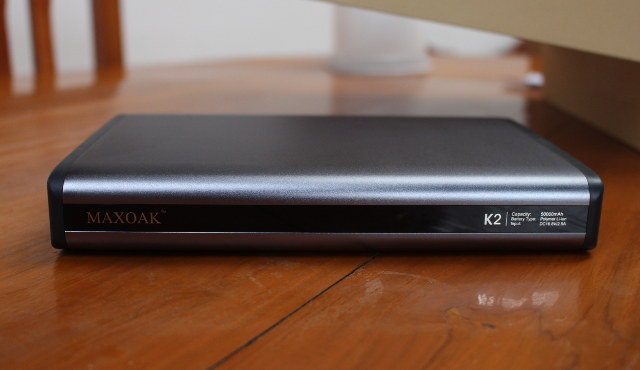
All connectors and buttons can be found on one side with the DC jack, four charging/capacity LEDs, the power button, 20V/3A and 12/2.5A barrel outputs, and four USB ports with 5V/2.1A or 5V.1.0A output. Most of the laptops I’ve used were powered by 19V or 19.5V adapters, so I’m not sure it’s safe to use with all laptops, but we’ll find out a bit more info about that below.
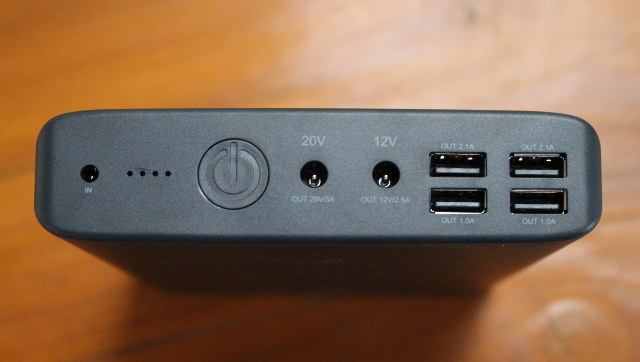
The power bank ships with a 100~240V AC to 16.8V DC/2.5A power supply, a power cord, a cable to connect to the 12V or 20V power barrel, 10 default adapters for various brands of laptops, 4 extra adapters for other laptops, K2 user manual, and an extra piece of paper explaining the extra adapters are used for Dell, Lenovo and Asus laptops, as well as providing some info on overcurrent and low current protection. There’s also a pouch bag to transport the power bank with an extra pocket for accessories.
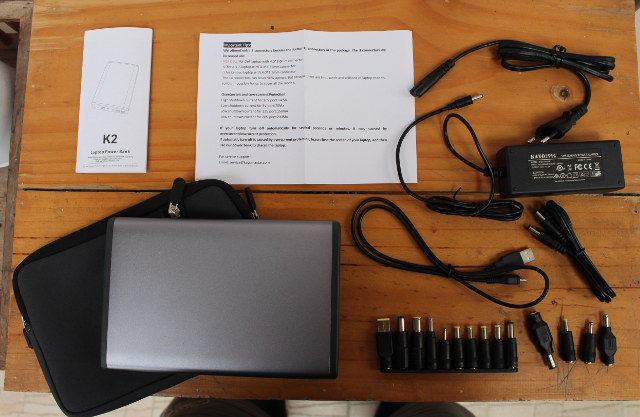
We can learn a lot more by checking out the user manual like it takes 6 to 8 hours to fully, the battery is good for 1,000 charging cycles, and we cannot use 12V and 20V outputs at the same time. The power bank will automatically turn off after 30 seconds if there is no load or a load under the minimal current. It can also be used while charging.
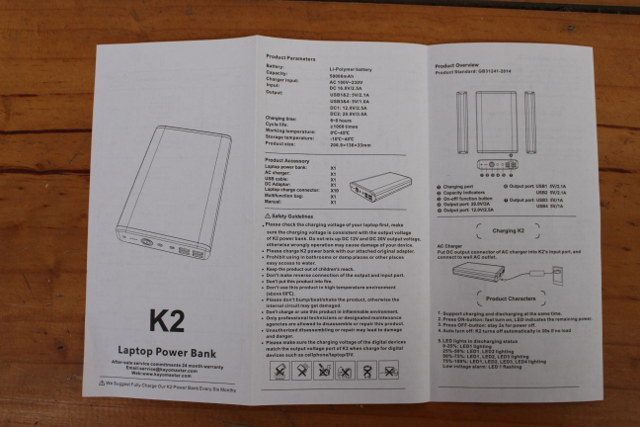
The other side of the user manual explains more about the usage to charge smartphones, 12V cameras, and laptops. Al lyou have to do it to connect the cable, and press the power button. It also describes which adapter is suitable for a given laptops. It appears the power bank can be used for laptops with 16V to 20V, I’m not sure how different voltage levels are handled since there’s no selection.
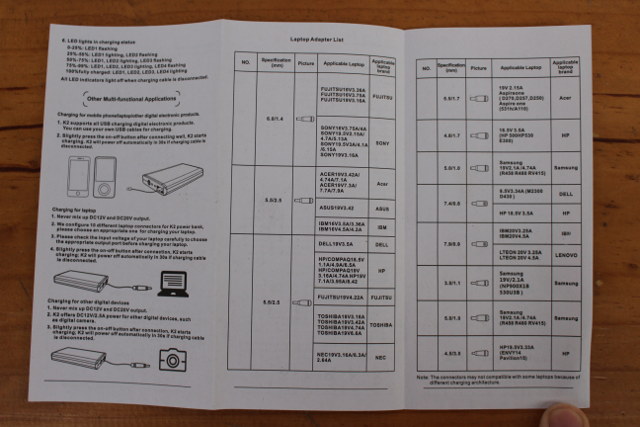
The power bank weight around 1.3 kg in its pouch, accessories and power supply not included, so it’s like you carry an extra laptop with you.
I’ll report charging and discharging numbers with various devices in a separate post, and also quickly check if it can be used as a UPS or backup battery for batteryless devices, but it’s not advertised as such, so it may not work for that purpose.
MAXOAK K2 laptop power bank is sold for $135.99 on Amazon US, as well as eBay. You may also be able to find more info on maxoak’s website.
Continue reading “MAXOAK K2 Laptop Power Bank Review – Part 2: Tests with Laptops, Phones and Development Boards“.

Jean-Luc started CNX Software in 2010 as a part-time endeavor, before quitting his job as a software engineering manager, and starting to write daily news, and reviews full time later in 2011.
Support CNX Software! Donate via cryptocurrencies, become a Patron on Patreon, or purchase goods on Amazon or Aliexpress





50*3.6*3600/4.2/80=1928
Theoretically the amount of energy is sufficient to cook instant noodles for a family of four.
Lol it’s not USB-C
also banned on every major airline
btw, can i also jumpstart a ‘vette with that?
I was thinking maybe light duty arc welding for emergency repairs.
I always wonder why an UPS is much more expensive to hold less energy.
Li-Ion UPS’ should start to be a standard, they have nice lifespan and provide enough security.
Soon I have to buy an UPS because my old one is saying goodbye, but I don’t want to buy another stupid acid thing.
@nobitakun
Standard UPS can handle 110V or 220V, but with a power bank you may be able to keep the computer on (not confirmed yet), but not the screen, and other devices connected to the mains.
I feel a bit allergic to high capacity advertised when we are talking about batteries…
It’s not very interesting to know the mAh value if the nominal battery voltage isn’t specified (or at least the number of cell series elements). Some battery manufacturer give the energy storage (in Watt-hour), calculated at a specific discharge rate.
Single 50000mAh element isn’t better (and may be worse because of lower efficiency of high ration step up converters eg with 12V output) than a two elements (2S) 25000mAh battery.
So please don’t forget to that aspect!
That being said, this battery sound great and I suppose it use at least 3S…